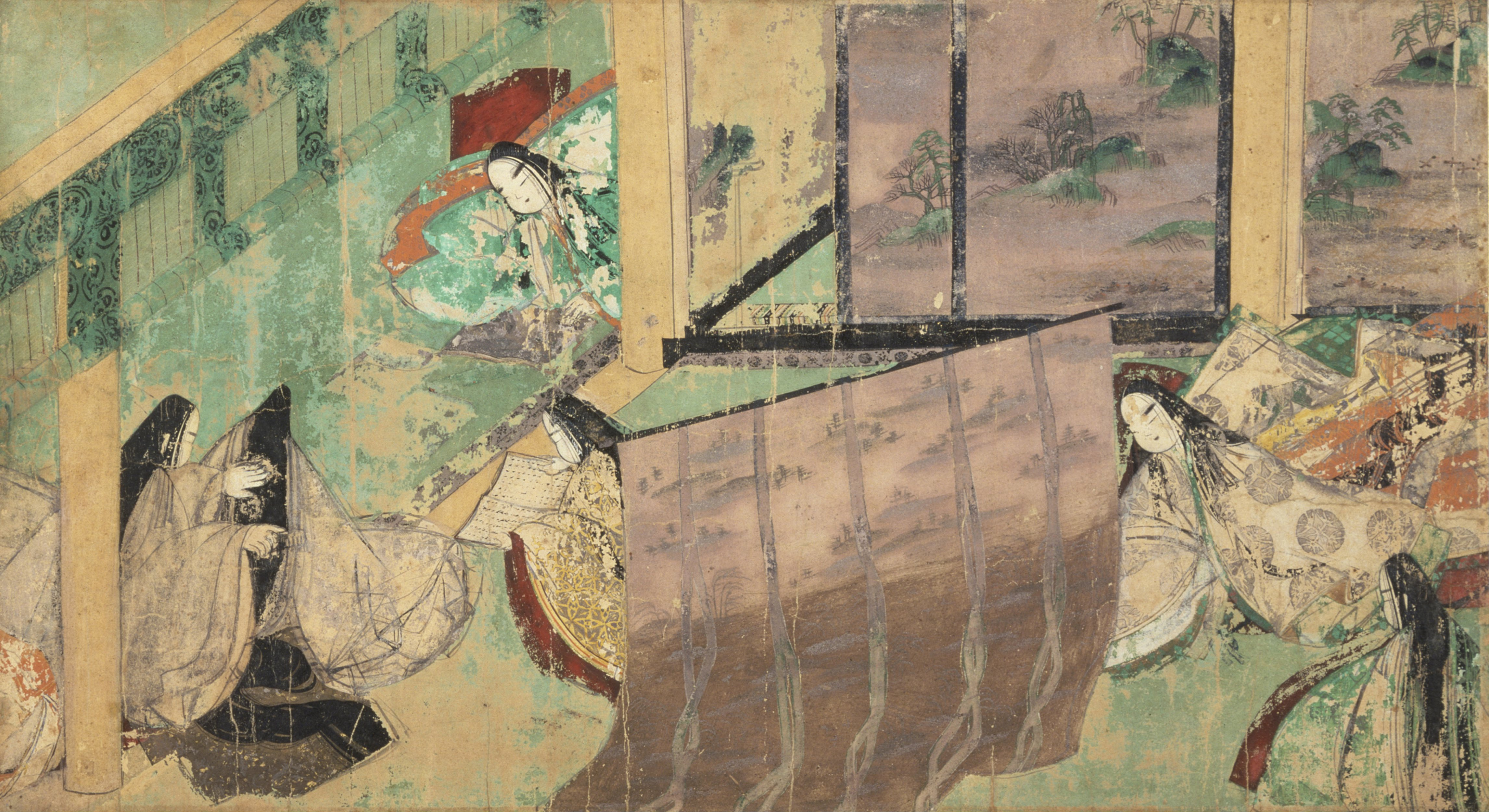Women as writers

During the Heian era, the status afforded to writing in Chinese meant that Chinese-language works were primarily written by men.[1][2] Women were rarely educated in Chinese, and if they were, they were expected to conceal this knowledge.[1] As a result, women wrote primarily in kana, and works like The Tale of Genji and Heian women's diaries were written in kana. In fact, kana was so heavily associated with femininity that it was sometimes referred to as onnade (女手, 'women's hand'), even though it was used by both men and women.
Some women, notably Murasaki Shikibu, did receive an education in Chinese and Chinese poetry. Sei Shōnagon, author of The Pillow Book, was renowned by her peers for her ability to exchange poetry with her male colleagues without betraying her knowledge of Chinese poetry. However, being a women knowledgeable of Chinese wasn't without its stigma - Murasaki herself derided Sei for "litter[ing] her writing with Chinese characters"[3] and called her "conceited".
In spite of the taboo on Chinese, women in the Heian court were nevertheless highly educated and literate in Japanese. Women in court service were expected to be skilled in the arts, including poetry and prose, to bring prestige and companionship to their empress. Much of Sei and Murasaki's writing is concerned with the day-to-day of this secluded life - a woman of the court spent most of her time hidden behind curtains or screens, making the occasional visit to Kamo Shrine or receiving a gentleman caller. [4] The rest of the time might be spent painting, telling stories, or composing or reciting poetry.
As one example of the level of education of Heian women, Sei's empress Teishi recounts the tale of Hōshi, the High Consort of Emperor Murakami. Her father, Fujiwara Morotada, gave her some advice when she was growing up:
First, you must study calligraphy. Next, you must determine to outshine everyone in your skill on the seven-stringed kin. And you must also make it your study to commit to memory all the poems in the twenty volumes of the Kokinshū.Hōshi took this advice to heart, and when Murakami heard that she had memorized all the poems in the Kokinshū (古今集, 'Collection of New and Old Poetry'), he set out to test her. He spent two days in her chambers asking her to recite the poems, and though even Hōshi's father was concerned she would fail, Hōshi did not make a single mistake.— Sei Shōnagon, The Pillow Book[5]
Footnotes
- Peter F. Kornicki, The Book in Japan, (Leiden: Brill, 1998).
Takahiro Sasaki and Wataru Ichinohe, Japanese Culture through Rare Books [MOOC] (FutureLearn, 2016). https://www.futurelearn.com/courses/japanese-rare-books-culture
- Murasaki Shikibu, The Diary of Lady Murasaki, trans. Richard Bowring, (London: Penguin, 1996), 54.
- Sei Shōnagon, The Pillow Book, trans. Meredith McKinney, (London: Penguin, 2006), xv.
- Sei Shōnagon, The Pillow Book, trans. Meredith McKinney, (London: Penguin, 2006), 21.